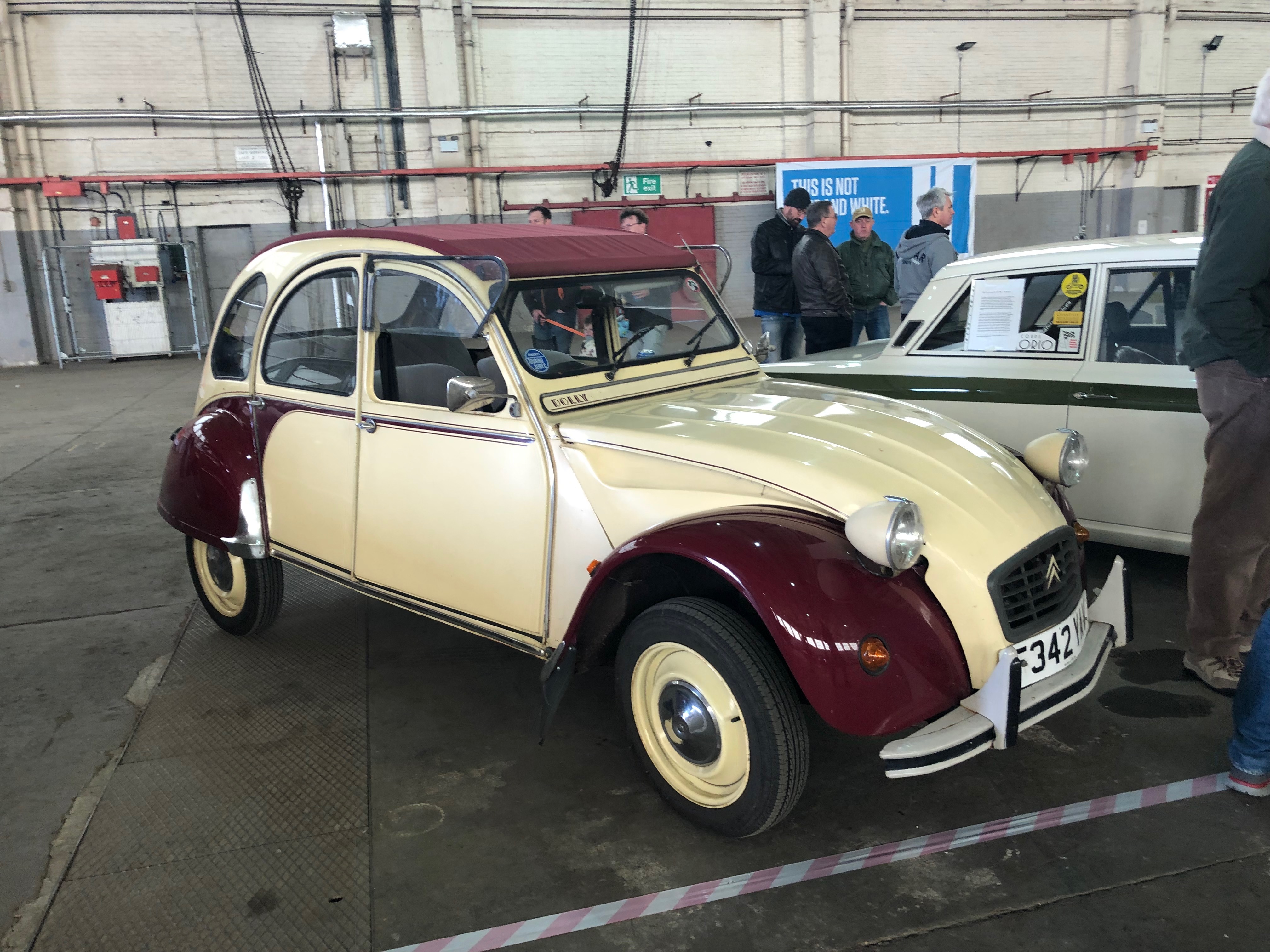-
Insurance
InsuranceAbout our productsLearn about insuringGet a quote Get current values, historical values, model history and more.
-
Valuation
ValuationHagerty valuation toolLook up a vehicle value Get current values, historical values, model history and more.
-
Events
EventsHagerty official eventsHagerty ClubhouseEvent calendar
-
Entertainment
EntertainmentMore to explore
- Portal login
1949 Citroen 2CV
Ripple Bonnet 4dr Saloon 0.4 L
Vehicle values by condition
Fair
Condition 4
£7,600
#4 cars are daily drivers, with flaws visible to the naked eye. The chrome might have pitting or scratches, the windshield might be chipped.
Good
Condition 3
£14,400
#3 cars could possess some, but not all of the issues of a #4 car, but they will be balanced by other factors such as a fresh paint job or a new, correct interior.
Excellent
Condition 2
£20,600
#2 cars could win a local or regional show. They can be former #1 cars that have been driven or have aged. Seasoned observers will have to look closely for flaws.
Concours
Condition 1
£26,800
#1 vehicles are the best in the world. The visual image is of the best car, unmodified, in the right colours, driving onto the lawn at the finest concours.
Insurance premium for a
1949 Citroen 2CV Ripple Bonnet 4dr Saloon 375
valued at £14,400
£128.69
/ year*
History of the 1948 - 1959 Citroen 2CV

1948 - 1959 Citroen 2CV
Citroen’s 1948 2CV (for two horsepower) was completely different from its pre-war prototype. Instead of being an aluminium, water-cooled car aimed at farmers, the new model was constructed of very thin steel, had an air-cooled engine, and was modified for mass appeal. However, one design brief requirement remained: the need for an owner to be able to drive fresh eggs across a rutted field without them breaking.
The basic design combined inboard front brakes and four-wheel independent suspension, longitudinal coil springs and inertial dampers by each wheel. Inside, the seats were deckchairs and the gear stick stuck out of the dash like an umbrella handle. The eccentricities continued throughout, as the canvas sunroof on early cars extended all the way to the back bumper and the wiper was driven off the speedometer cable (the only instrument). If the car is not in motion, what use is a wiper?
The first Citroen 2CVs were all grey in colour with suicide front doors, and were a huge hit. The 375cc Model A lasted until 1953, at which point it was replaced by the 425cc AZ, AZL and AZLP, which ran until 1960. The model evolved slightly through the 1960s, with a smooth hood replacing the ripple bonnet (1960), the appearance of a 602cc engine (1963), introduction of front-hinged front doors (1964), and the use of rear quarter windows (1965). The 425cc engine was bumped to 435cc in 1968 and the two engines made up the 2CV4 and 2CV6 through the 1970s and into the 1980s. Inboard front disc brakes followed in 1982. Production of the Citroen 2CV was moved from Paris to Vigo in Portugal in 1988 for the car’s final two years.
Several interesting variants of the Citroen 2CV were offered during the model’s run, including the Citroen 2CV Sahara, a 4x4. Produced from 1960 to 1971, the car carried engines both fore and aft to power all four wheels. It was difficult to drive, as the gear lever engaged both gearboxes at once, though it could run on either motor separately. It was also quite expensive and only 691 were sold, about 25 of which survive. A plastic-bodied Mehari Jeep was built in the late 1960s, but prolonged sunlight caused the body to disintegrate, making them quite rare today.
Citroen produced corrugated, boxy vans throughout, but they led hard lives and are also a rare sight today. The black Charleston, with grey, yellow, and maroon side panels, was produced in the 1970s and 1980s and is easily identifiable due to the colour scheme.
Today the Citroen 2CV is a beloved French icon. The “Tin Snail” gets 40+ mpg, can be surprisingly comfortable, and is instantly recognisable. The car’s flat floor, light weight and front-wheel drive means it can traverse a variety of surfaces.
The car’s downside is that all possible engines are tiny; displacement on the air-cooled twins included 375cc, 425cc, and 602cc, and horsepower went from 9-33. Top speed ranges from 40 mph-75 mph, and there are no hills the car can climb quickly. A radio is pointless given the cabin noise, and anybody can pry the car open to steal it.
Rust is the Citroen 2CV’s main enemy and a wise buyer will make sure their car came from the south and west of France, Spain and Portugal, rather than northern Europe. Check the front axle tube mounts, longitudinal shock mounts and the petrol tank area first. On the body, floors, sills, windscreen frames – especially around the vent – rear panels above the bumper and fender edges are potentially nasty. Also check the rear bolt area of the front fender, and the headlight bracket support. Replacement chassis were made and these are galvanised, so they’re easy to spot.
With 3.7 million 2CVs built, parts are no problem, with clubs and suppliers present around the world. Early trim pieces can be elusive, but body panels are readily available and easy to install, which is preferable to bodywork. Pre-1961 models are the most collectible and increasingly difficult to locate, as well as painfully slow. After that, condition and colour tend to drive a purchase rather than model year and most later cars have been fitted with the largest 602cc engine.
Hagerty Newsletter
Get your weekly dose of car news from Hagerty UK in your inbox

ADVERTISEMENT